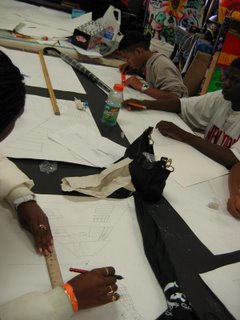Those crazy artists are taking over Oakland!


From the Crucible's Annual Fire Arts Festival
Held in a large open parking lot at 7th & Union next to where the BART emerges from the tangle of the 980 freeway. The lot is publicly owned and is used as overflow parking for the West Oakland BART. These swaths of parking that straddle the large pieces of infrastructure are some of the last open building sites in West or Downtown Oakland. Located across the street from the Crucible, another arts center in this area could solidify the transformative value of the arts for this area, which the city has already designated for community oriented development. Rather than compete, the two arts program can compliment eachother, with the Crucible offering industrial arts courses and facilities and the new program focusing on art and architecture. The massive brutal cuts of these freeways once tore this nieghborhood apart, quickly speeding commuters through the area while cutting it off from the heart of the city. This program could not only make the immediate area a more beautiful, dynamic space, but also reconnect it back to the city.
Labels: dbackman




